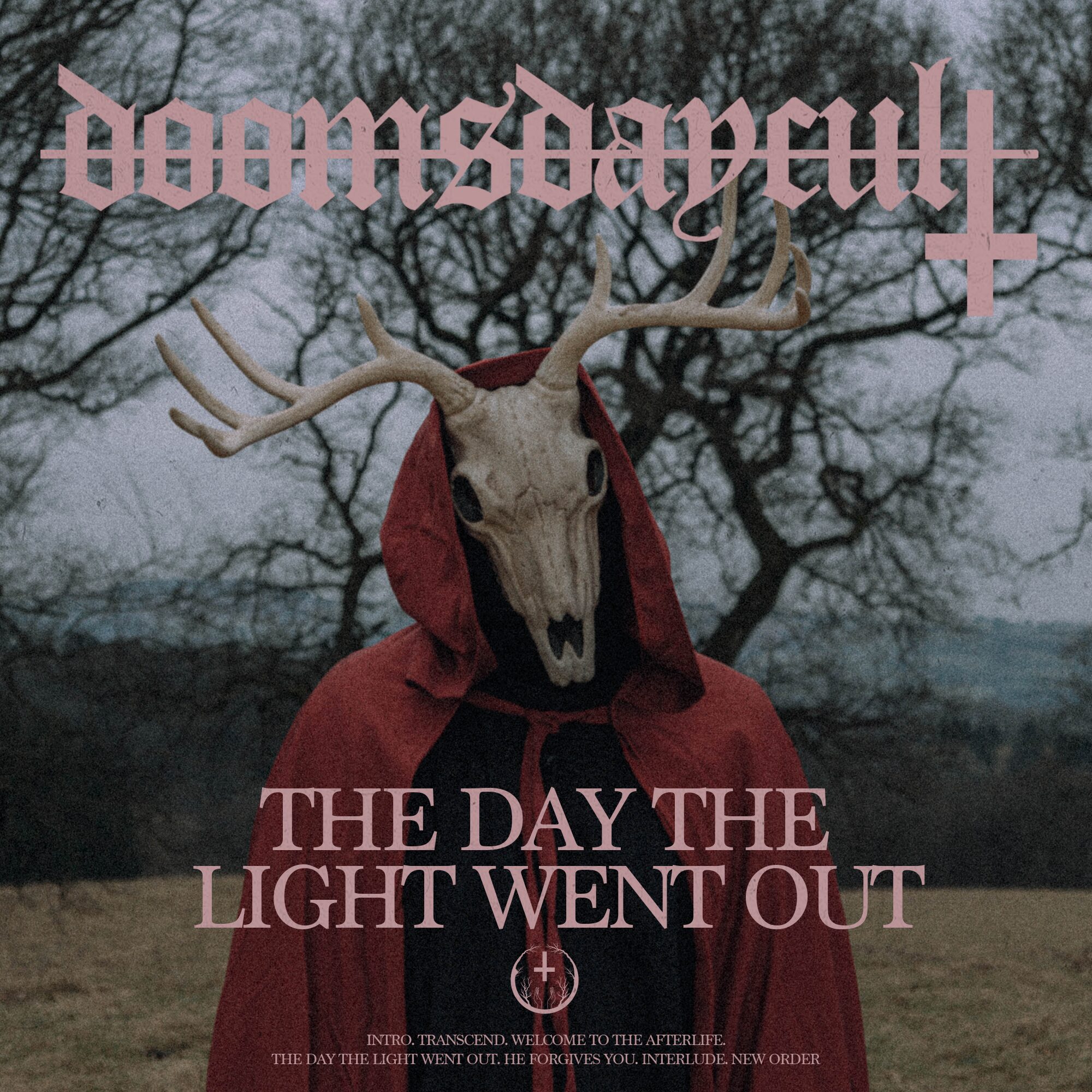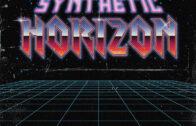Album Review: The Day the Light Went Out — doomsdaycult

Album Review: The Day the Light Went Out by doomsdaycult
Written By: Dan Eachus
Release Date: September 04, 2025
Genre: Darksynth / Experimental
Introduction
Darksynth thrives on the knife-edge between menace and momentum—music that feels like a neon skyline reflected in a black ocean. On The Day the Light Went Out, UK project doomsdaycult distills that feeling into a tight, cinematic sequence of seven tracks. The record’s economy is part of its power: nothing is wasted, everything is purposeful, and the arc unfurls like a night drive you can’t abandon because the road itself is telling you a story. The concept is baked into the title—what happens when illumination fails, when systems collapse and we’re left with ritual, memory, and will? Across these pieces, doomsdaycult offers one answer: you keep moving. You find a beat in the dark and turn it into a signal. This album is a beautiful mind trip, so sit down, buckle up, and hold on tight.
The opening ritual: “Intro”
The brief “Intro” (0:33) works like a cinematic slate. It doesn’t try to be a mini-song; it’s a pressure change—an airlock that seals you into the album’s atmosphere. The sound design hints at the palette to come: low-end threat, high-end shimmer, a tension line between the two. It’s the auditory equivalent of a door sliding shut behind you. The decision to keep it terse is smart; dread lands harder when it arrives quickly.
First ignition: “Transcend”
“Transcend” (3:28) is where the record truly kicks—engine-on, streetlights strobing past. The bass is tuned for grit but it’s not mud; it has grit with direction. The drum programming rides that sweet spot where four-on-the-floor pulse intersects with syncopated ghost hits, giving the track propulsion without predictability. Lead lines slice through like arc welds—resonant, minor-key, and just unstable enough to feel dangerous. The title telegraphs the intent: this isn’t wallowing-in-darkness darksynth—it’s ascension-through-darkness. The melody doesn’t simply brood; it reaches, stretching over a chassis of pressure and resolve.
After the storm door: “Welcome to the Afterlife”
“Welcome to the Afterlife” (3:16) reframes the album’s apocalypse not as annihilation but as a threshold. The mood shifts from predatory to panoramic: pads widen, reverb carves a deeper chamber, and the harmony opens just enough to suggest a horizon line. There’s still muscle in the kick and a blade in the lead, but the arrangement breathes. The hook feels like a beacon—faint at first, then brighter—before the track retracts into a resolute cadence. The emotional pivot is subtle, but it matters: the record starts to promise not just survival but meaning.
Title-track fulcrum: “The Day the Light Went Out”
Title tracks carry expectations, and “The Day the Light Went Out” (2:34) answers by tightening the narrative coil. It’s shorter, leaner, and colder—a set-piece that locks into a stalking rhythm and refuses any unnecessary flourish. Think of it as a montage cut: flashes of sirens, empty subway tunnels, a skyline winking off district by district. The lead here is more motif than melody, repeating with small evolutions, as if to say: this is the condition now. The track isn’t despairing; it’s diagnostic. The drum accents and filtered noise details read like telemetry—evidence of a system under stress.
A knife of mercy: “He Forgives You”
With “He Forgives You” (3:16), doomsdaycult threads an element many darksynth projects avoid: vulnerability. The harmony warms by a few degrees; the top-line carries a hint of lament, a contour that bends toward absolution without diluting the menace underneath. The juxtaposition is striking—penitence over pounding infrastructure. It’s easy to imagine this one as the emotional centerpiece in a live set: strobes throttled back, fog low, the crowd swaying to a motif that lands like an apology you’re finally ready to accept. The title does heavy lifting; the music meets it with restraint rather than sentimentality, letting the chord changes do the forgiving.
Negative space as drama: “Interlude”
“Interlude” (0:46) is a short corridor that earns its keep. After the emotional openness of the previous track, the album needs recalibration. The interlude gives us detuned tones, static, and a faint rhythmic suggestion—like footsteps in another room. The silence between hits matters as much as the hits themselves. It’s a palate cleanse that also functions as foreshadowing, narrowing the aperture so the finale can hit harder.
New order from old ruins: “New Order”
Closer “New Order” (3:38) is the record’s statement of intent: not a return to the light, but a blueprint for navigating without it. The beat is assertive; bass sequences interlock with percussive filigree; and the lead comes back with a tone that feels tempered—less feral, more focused. There’s a touch of triumph in the way the chords resolve—never major-key anthemic, but undeniably forward. If earlier tracks documented collapse, this one diagrams structure: grids, routes, protocols. The final minute, in particular, layers motif on motif just enough to suggest community: multiple signals, synchronized, becoming something like order. It’s a satisfying, narrative-true ending.
Production notes: clarity with teeth
The record’s sound achieves a tricky balance: clarity without cleanliness. Kicks hit with definition; bass occupies space without swallowing the mix; leads are bright but not brittle. Saturation is used like a cinematographer uses grain—texture that deepens mood rather than obscuring detail. Spatially, the album prefers long corridors to vast cathedrals: delays ping off into the near-distance; reverbs feel architectural, not syrupy. Dynamic pacing is also on point—brief tracks compress time, longer ones open it, and the interstitials reset the ear.
The sequencing enhances this craft. By alternating pressure (e.g., “Transcend,” the title track) with perspective (“Welcome to the Afterlife,” “He Forgives You”), the album avoids the sameness trap that can flatten darker synth records. And while the cut lengths are concise, they don’t feel rushed; each track says its piece and cedes the floor.
Theme work: from outage to intent
As a concept, The Day the Light Went Out invites heavy-handedness, but doomsdaycult resists melodrama. There’s dread here, yes, but also craft, patience, and an almost documentary eye. The album proposes a simple arc: shock → orientation → resolve. “Intro” and “Transcend” handle ignition; “Welcome to the Afterlife” reframes context; the title track names the condition; “He Forgives You” processes the damage; “Interlude” hardens focus; “New Order” operationalizes the lesson. It’s not redemption. It’s method.
For fans & first listens
If your darksynth anchors are artists like Carpenter Brut, Perturbator, and Sierra, you’ll feel at home in doomsdaycult’s world—but the project’s particular fingerprint is its balance of tensile rhythm and restrained melody. This isn’t all-out aggression; it’s discipline under duress. First-time listeners should run it front-to-back on good headphones; the stereo field carries quiet details—filter movements, ghost percussion, micro-delays—that repay attention. Club systems will love “Transcend” and “New Order”; late-night city drives belong to “Welcome to the Afterlife” and “He Forgives You.”
Verdict
The Day the Light Went Out is concise, cohesive darksynth: seven movements that treat apocalypse as a compositional challenge rather than an aesthetic cliché. doomsdaycult shapes dread into design, then design into momentum. The light may have died, the record suggests, but the signal didn’t—and that’s enough to build a new order.
You can listen to the entire album here on Spotify:
















